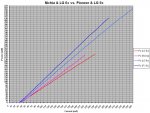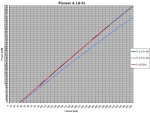daguin
0
- Joined
- Mar 29, 2008
- Messages
- 15,989
- Points
- 113
Looks like we have our first murder candidate plotted. The other two are installed in modules too, but i haven't touched them yet...
So far i will only say, that the Vf tracked with the Pioneer diode almost spot-on, while the efficiency was clearly quite a bit lower than the first 203BK i've tested.
But the results are consistent with what i've seen elsewhere on the forum when it came to LG 8x's....
And so it begins . . . . .:evil:
Peace,
dave







